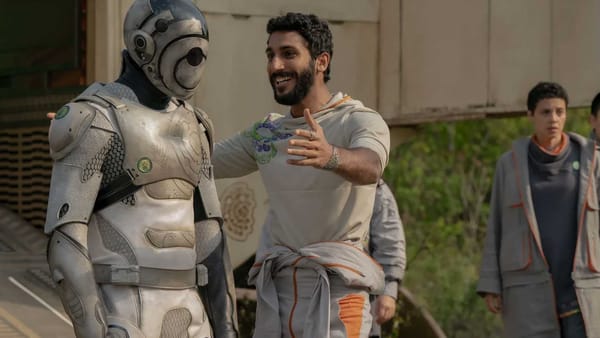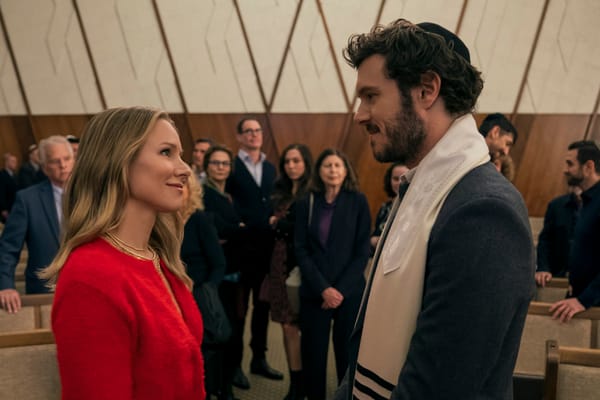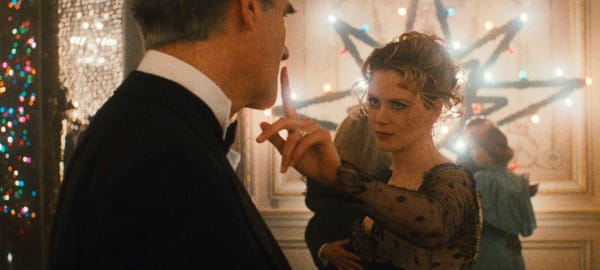Lessons from Across the Spider-Verse: The Diorama Scene
The whole story in miniature.
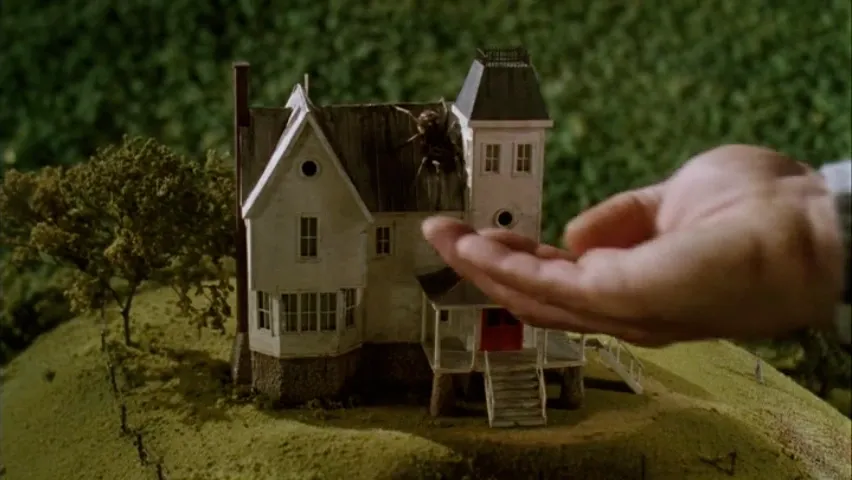
Whether it’s made in a shoebox for Ms. Melville’s Literature class or staged in a museum with elaborate detail, a diorama has a clear goal: It takes a larger story or event and captures a single moment to represent the whole.
In films and TV, a diorama scene does something similar. It gives the audience an idea of what the entire story will be about:
- The scene is self-contained, beginning and ending in the same location (Like a shorter version of a Bottle Episode).
- There is a present-tense conflict in the scene. Whoever this story is about needs to have something to gain or lose in this moment so the audience doesn’t roll their eyes at the big flashing SYMBOLISM sign.
- The present-tense conflict (or conflicts), dialogue, and characters featured in this scene plant ideas and expectations in the audience that are paid off later.
And in the script by Phil Lord & Christopher Miller & David Callaham, there's a great example of this type of scene for writers to learn from.
When we last left our hero...
Early in Across the Spider-Verse, Miles Morales catches The Spot and leaves him for the police. He rushes to a meeting with his parents and a school guidance counselor. Up until this point, he’s been juggling messages from his parents wondering where he is with fighting a villain with reality-bending powers.
But we need to pull back and think about the whole story before we can see how this scene weaves together the most important threads of the rest of the movie.
What's at stake for Spider-Man in this story?
There are two super-hero conflicts at the heart of this story. First, The Spot wants to be the arch-enemy of Miles’s Spider-Man, blaming Miles for the accident that gave him his powers. Then there’s the interdimensional league of Spider-Beings lead by Miguel O’Hara, who work to seal breaches between dimensions and prevent the disruption of what they call “Canon Events.”
Miguel’s goal is to make sure the multiverse stays safe, and that this means that every single Spider-Being has a series of parallel moments in all of their lives that must happen, like the death of a mentor. Breaches happen when canon events don't go as they're supposed to.
Miles tries to juggle this with the expectations of his parents. He’s hiding his superheroics from them, and the strain builds. He's trying to be two people at once. Miles sees himself as complicated, maturing, and figuring himself out. His parents still see him as a kid, or as a reflection of who they used to be.
They’re all conflicts about one thing for Miles: Why does everyone else think they get to tell my story?
Our Diorama - The Guidance Counsellor Scene
Watch (and re-watch) the scene along with the breakdown below.
There’s a lot of overlapping conversations within the scene, so let’s separate it out into our three conflicts.
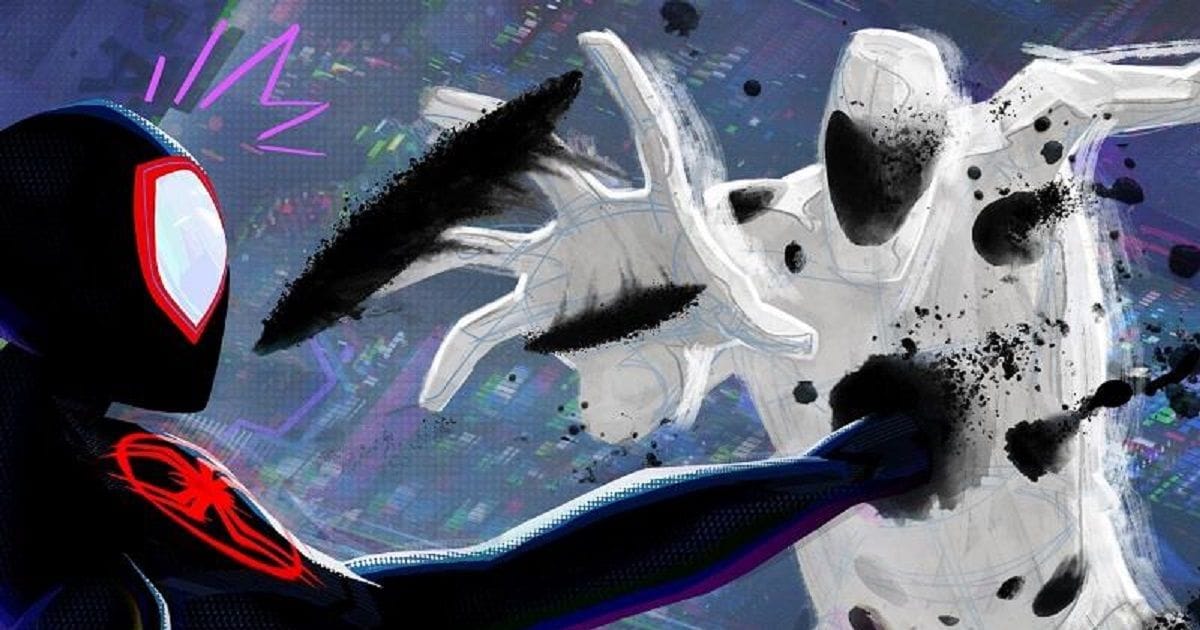
Spider-Man vs. The Spot
- The most obvious connection to this plot comes when Miles clocks out the window that The Spot has broken free and is up on a nearby rooftop.
- There’s an aesthetic side to this too. When the Spider Sense adds a pop of comic style, we can read Miles’s thoughts in a comic-style caption. It breaks the look of the scene in the same way that it breaks Miles’s concentration.
- This moment does double duty, because it also plays into the conflict between Miles and his parents about his keeping secrets and juggling two lives.
- When Miles shows up late and leaves early? It’s because of The Spot.
- What does Miles want to do in college? Study quantum physics, dark matter, and traveling to other dimensions. How was The Spot created? When Miles blew up a machine built to open portals to other dimensions.
- Who intends to kill Jeff Morales to get revenge on Miles? The Spot. And it's a moment that matches with a canon event from the other Spider-Beings' lives.
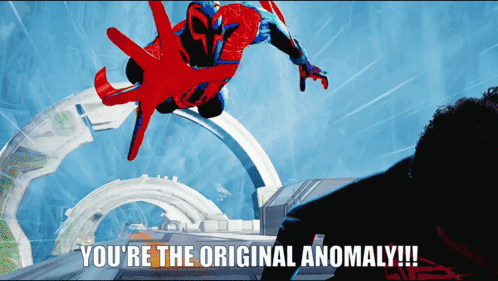
Miles Morales vs. Miguel O’Hara
- The Guidance Counsellor has lots of lines that allude to the coming multiversal conflict, but all in terms that fit with her job:
- “You see, every person is a universe, and my job is to capture your person’s universe on this piece of paper.”
- After Miles makes his heartfelt plea about his goals: “That’s your story! Now just stick to the script.” A foreshadowing of Miguel O'Hara's requirement that all Spider-Beings need to stick to canon?
- This extends to when she attempts to erase the family’s reality to better fit a narrative she thinks admissions officers are looking for: “Your name is Miles Morales. You grew up in a struggling immigrant family...”
- “Having a story at all seems gross.” Miles’s reaction to the guidance counsellor’s efforts is pretty close to a thesis statement for him. His entire battle against Miguel is built on a disagreement over whether we have to accept other people framing our lives on their terms, or if everyone is an individual with the agency to chart their own path.
- When objecting to his parents wanting him to choose a college closer to home, Miles says: “You all got me into this school because you thought I could do something special. And now I think so, too. And the special thing I want to do is this.” Miles is coming into his own as Spider-Man, and he doesn’t want to be forced into a school that suits someone else's needs, just like how he doesn't want to be forced by Miguel to stay true to canon.
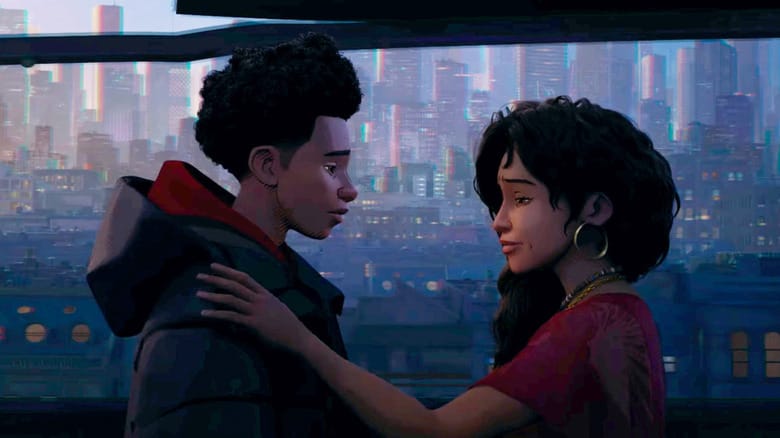
Rio & Jeff Morales vs. Miles Morales
- When he’s told that you can’t have your cake and eat it too, Miles replies, “Unless you bake two cakes.” He believes that it’s possible to have two completely separate lives that don’t negate each other.
- Miles has been missing classes (“But I just have a lot going on...”), he’s overselling his competence (“I’ve got to get back to being a great student, so can we make this quick?”), and he’s earned the ire of his mother with his failures in Spanish (“Cálmate, mama. Eso no es my fault.”)
- This last one isn’t just about his inability to balance his two lives as a superhero and a student/son, but also specifically as Rio seeing him balancing his shared identities poorly and not acknowledging her family’s Puerto Rican heritage via language fluency.
- Rio wanting Miles to find a university closer to home than Princeton (“New Jersey’s too far from New York?”) acts as a very direct desire to keep him close. She sees only the part of Miles that’s her son, and doesn’t know about the other half of him that’s driving him.
- Pair this with Jeff trying to show support as Miles explains what he wants to do at Princeton, but his asides end with “Yeah, I have no idea what that means.” There’s a division between Miles and his parents’ worlds.
- Plus the dismissive way that Jeff says “Oh, yeah, that sounds like a really good fake job.” He’s showing he sees Miles having a childish naivety about his future, but Miles sees the possibilities of what his studies could do.
- Let's not forget that Miles will travel very far from home over the course of this story.
- Rio asking as Miles leaves, “Did you order the cake for tonight?” And Miles responds with a string of unfinished thoughts to let the audience know that he’s thinking something to the effect of “What cake?” He’s leaving to be a superhero, but his mother is reminding him of his responsibilities to his family on the way out.
The Diorama Scene weaves story threads into a web
In the case of Across the Spider-Verse, the film has multiple plot threads running simultaneously and criss-crossing. Besides the conflicts Miles deals with, Gwen Stacy also needs to wrestle with her relationship with her dad, whether she believes in Miguel’s leadership, and how willing she is to let people in. (“I don’t do friends.”)
That’s a lot of plot, and it could feel like haphazardly piling one thing on top of another. But we get this scene early on that primes the brain to think about some ideas:
- Lives become stories, and everyone has a story.
- Other people want to tell you what your story is.
- Can you live two separate lives, or do you need to be one whole person?
- How do you take authorship of your own story?
The Diorama Scene helps set up big moments later on
Near the end of the film, Miles reaches the end of a chase where Miguel leads hundreds of Spider-People in pursuit of Miles. At a seeming dead end, and confronted with the information that the spider that bit him wasn’t from his dimension (and therefore wasn’t meant for him), Miles looks defeated. Miguel calls him the original anomaly, responsible for all the chaos that came after.
There are lots of potential one-liners he could've used before zapping Miguel and making his play to get back home, but none of them would have resonated here like this call back to the diorama scene. In all the areas of his life covered in that scene, other people try to limit Miles with expectations for what he's supposed to do.
And Miles has officially had enough:
“Everyone keeps telling me how my story is supposed to go. Nah. I’mma do my own thing.”
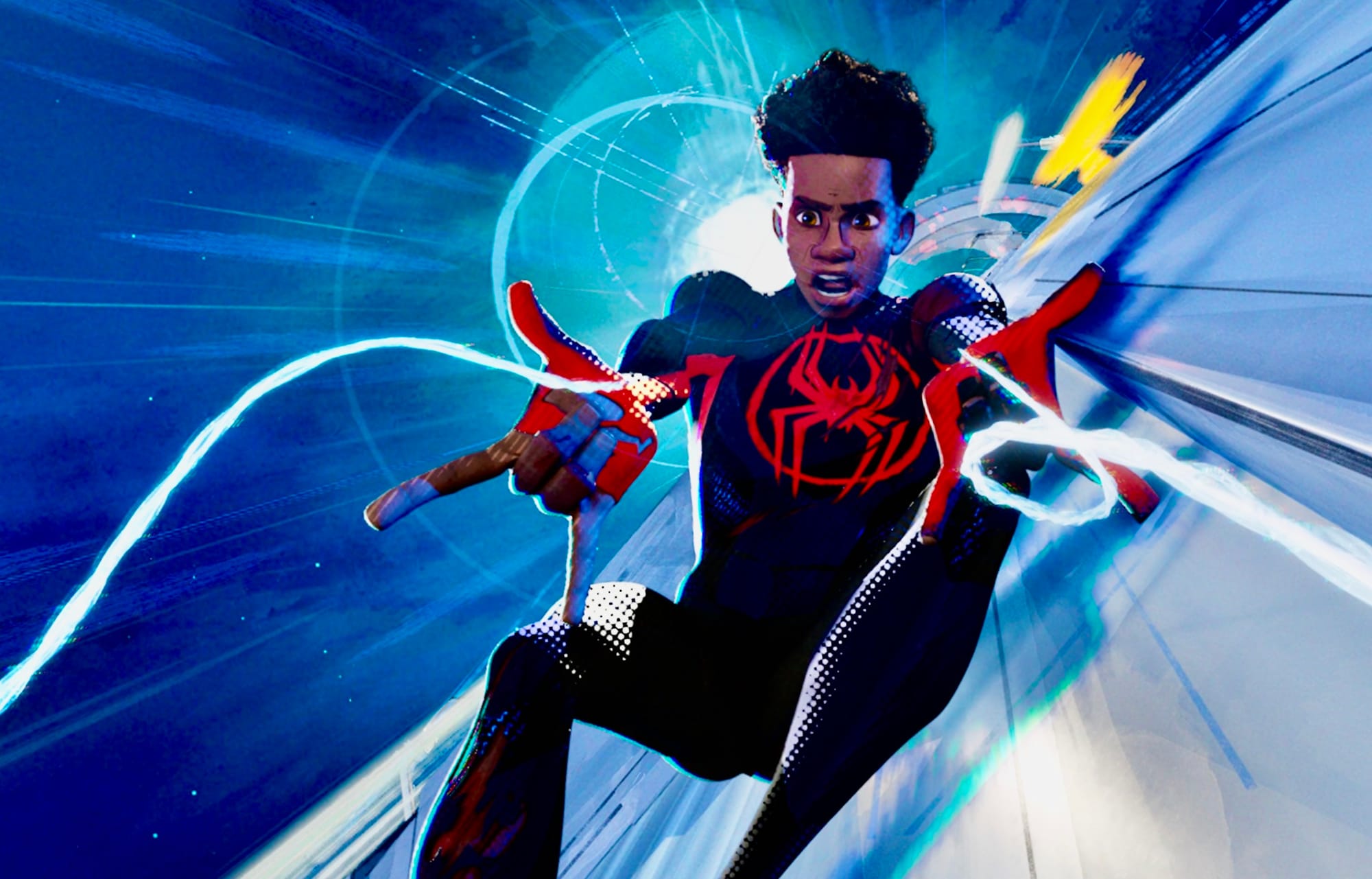
Because he's Miles Morales. He was bitten by a radioactive spider. I think you know the rest.

